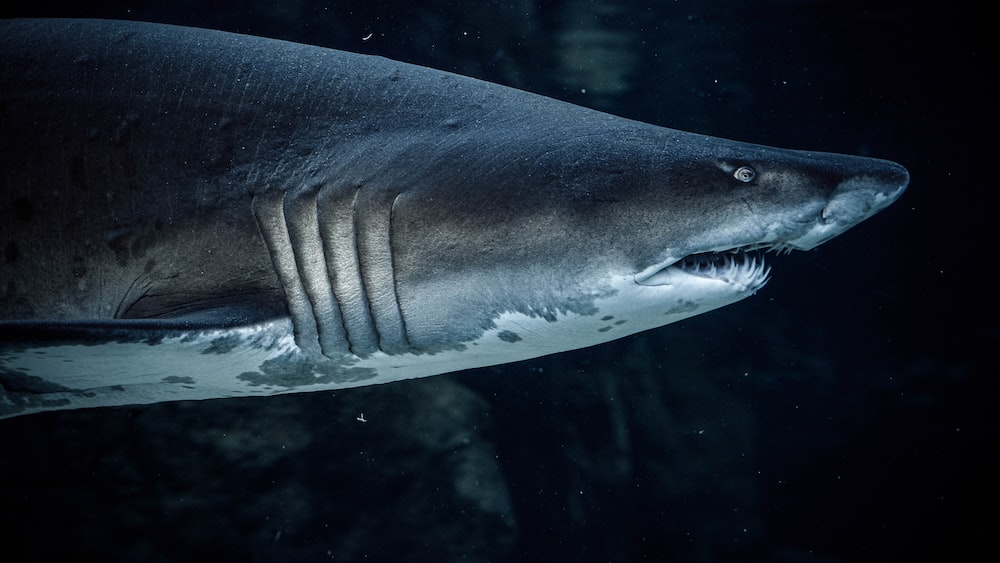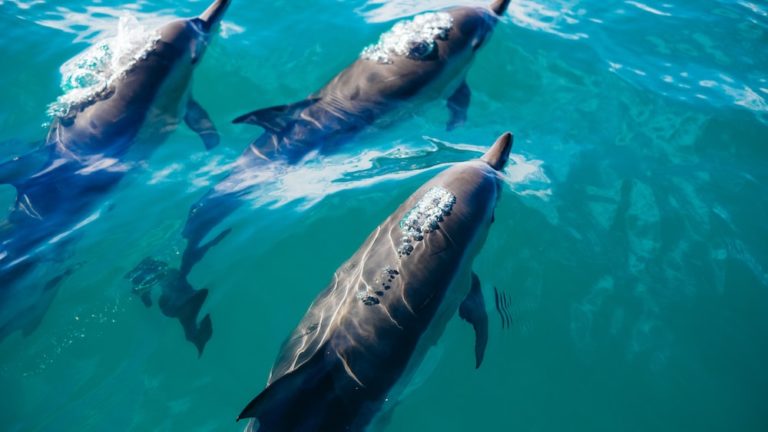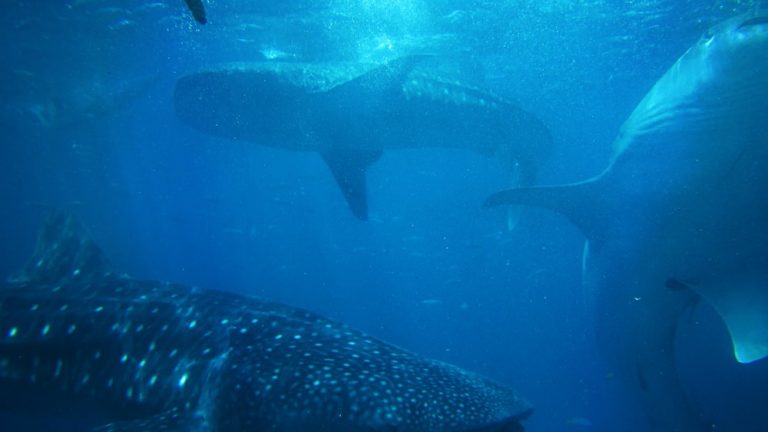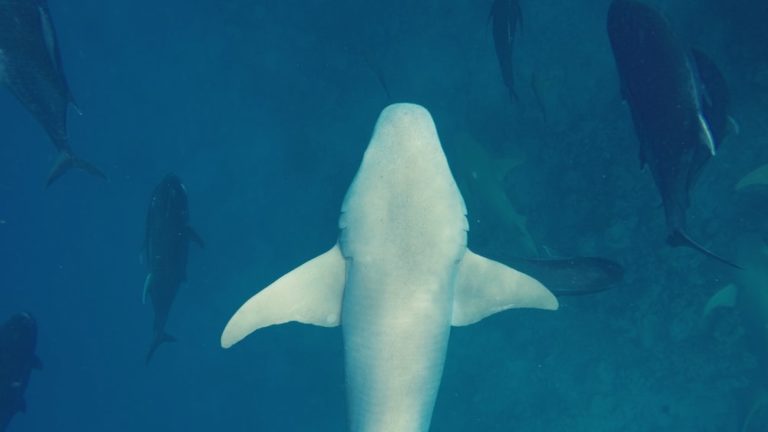Discover Scientific Names For Sharks
Discover Scientific Names For Sharks
Dive into the enigmatic world of sharks where scientific names play a crucial role in understanding these fascinating creatures of the deep. For marine life enthusiasts, eco-adventurers, and diligent conservationists, the tapestry of the oceans is woven with these majestic creatures. Their designations go beyond mere labels; they are the cornerstone of marine biology and essential for the conservation of biodiversity.
Key Points:
- Scientific names for sharks play a crucial role in understanding and conserving these creatures.
- The binomial nomenclature system is used to name every shark, providing a universal language for scientists.
- Understanding scientific names aids in precise communication, research, and conservation efforts.
- Sharks are classified from Kingdom to Species, and the classification system helps in understanding their diversity.
- Conservation efforts rely on the precision of scientific names to identify threatened shark species and enact protection measures.
- Scientific names are lifelines for the continuity of shark species and essential for the health of marine ecosystems.
Setting off on this underwater safari, imagine drawing closer to the uncharted domains of shark taxonomy, where every name tells a story, deciphering characteristics and lineages. Marine adventures become etymologically richer when we fathom the depths of scientific names for sharks. It’s not just about swimming with sharks; it’s about knowing them by name, much like recognizing an old friend among the waves.
Through the saline narrative of Jasper’s quests and observations, we will embark on an oceanic journey. Let’s peel back the salty layers of the sea, delve into the realm of Sharkasia, and unearth the meaning behind the names that echo through the blue abyss. It’s a journey of discovery, where every finned silhouette comes with a tale as unique as its scientific name.
The Importance of Scientific Names in Shark Study
The study of sharks is not just about the thrill of a fin slicing through the water; it’s about the precision and clarity that scientific names offer. Like a compass guiding sailors, these names navigate through the sea of common names, which can often be misleading or repetitive. Scientist or seafarer, knowing the scientific names for sharks is like having a key to the ocean’s secrets. It’s not just about calling a shark by any name, but the right name, sanctioned by science.
Understanding Binomial Nomenclature
Carl Linnaeus might never have imagined his binomial nomenclature ripping through marine currents when he devised the system in the 18th century. But here we are, using his two-part naming system, a double-barreled approach to naming every shark that cruises our planet’s seas. The first part, the genus name, takes its place with regal authority, while the species name tailgates with distinguishing detail, like specific markings or traits unique to that shark.
Together, they form a universal language of science that slices through regional and vernacular barriers, as unambiguous as the dorsal fin cutting through waves. This nomenclature isn’t just a bureaucratic tick-box for taxonomists; it’s the global positioning system of biology. It encapsulates relationships among species, mapping out evolutionary paths like charting a course through coral mazes.
The binomial nomenclature devised by Carl Linnaeus creates a universal language of science that encapsulates relationships among species and maps out evolutionary paths.
The Role of Taxonomy in Shark Conservation
In the aria of ocean conservation, taxonomy isn’t just the libretto, it’s the conductor of the orchestra. Each scientific name rings out like a note, signifying the importance of a species and its place in the marine concerto. Recognizing a shark by its scientific name isn’t mere formality; it’s acknowledging its unique ecological role and the urgent need for its protection.
Taxonomy becomes the shield and strategy in shark conservation, enabling us to identify those dancing just a fin away from extinction. By thickening the plot with layers of taxonomic detail, conservation narratives gain clarity, ensuring each shrouded species is counted in our fight against the tide of environmental threats. As we understand the cast of characters in our seas, our conservation efforts can be fine-tuned, like orchestrating a ballet in the abyss, ensuring no species is left behind.
Major Shark Orders and Their Scientific Names
Embark with me, fellow ocean-enthusiasts, as we unspool the ribbon of time to unveil the grand orders of sharks, where their scientific names reflect evolutionary chapters written in the ocean depths. From lithe hunters to gentle giants, each order unfolds like a chapter in the saga of the sea.

Carcharhiniformes: The Ground Sharks
Ground sharks, or Carcharhiniformes, the largest order, swim through the lexicon of the seas with undeniable familiarity. Names such as the bull shark, Carcharhinus leucas, and the tiger shark, Galeocerdo cuvier, arise from the sandbanks of scientific vocabulary, giving snorkelers and divers alike a glimpse of wild poetry in motion.
Their nomenclature reflects not only physical attributes but also habits and habitats; a taxonomy that narrates a lifecycle intertwined with the seabed. With these names, researchers and conservationists weave nets of knowledge, capturing data vital for the protection of these bottom-dwellers.
Lamniformes: The Mackerel Sharks
In the open ocean, where the Lamniformes reign, their moniker, ‘mackerel sharks,’ whispers tales of streamlined bodies and fearsome teeth. Giants like the great white, Carcharodon carcharias, carry their names like a legacy written in salt and blood. These names, echoing through scientific circles and public lore, bear witness to power and predatory agility.
The order Lamniformes isn’t just another group; it’s a collective of oceanic emblems, hinged on the pinnacles of marine food chains. In their scientific names, we discover a map to understanding their remarkable anatomies and evolution, crucial for their stewardship in an ever-changing marine environment.
Orectolobiformes: The Carpet Sharks
Under the ornamented tapestry of the ocean lie the Orectolobiformes, better known as the carpet sharks. These creatures, adorned with intricate patterns, hold their names as a testament to their benthic elegance. The whale shark, Rhincodon typus, the largest of all fish, wears its scientific badge, highlighting its gentle giant juxtaposition.
These names beckon us into a world of camouflage and calm, where sharks glide like living mosaics on the ocean floor. They invite us to ponder the marvels hidden beneath the waves, where each name is a portal into a shark’s secret world.
The names of carpet sharks, like Orectolobiformes and whale shark Rhincodon typus, invite us to explore the hidden marvels beneath the ocean’s surface.
Squaliformes: The Dogfish Sharks
In hidden corners and cold depths, the Squaliformes, or dogfish sharks, pursue life in serene obscurity. Their scientific names, encrusted with tales of survival, show resilience that dates back millions of years. The Greenland shark, Somniosus microcephalus, silently narrates a life of arctic endurance and longevity.
These names, etched into scientific annals, offer a glimpse into a world where adaptability defines existence. For science and conservation, these names serve as buoys, marking the spots where these creatures can be safeguarded for posterity.
Hexanchiformes: The Frilled and Cow Sharks
Delving further into the abyssal plains, one encounters the Hexanchiformes – sharks such as the frilled and cow sharks, whose names evoke an ancient lineage. With features remarkably unchanged for eons, their names like Hexanchus griseus and Chlamydoselachus anguineus speak of living fossils, cruising through the deep as shadows from the ocean’s primeval past.
Their identities, fossilized within their scientific names, are more than just labels; they represent a continuous thread in the weave of marine evolution. Understanding their place in the oceanic tapestry is crucial for their protection and the preservation of biological diversity.
Understanding the ancient lineage and significance of sharks like the frilled and cow sharks is crucial for protecting marine evolution and biological diversity.
Pristiophoriformes: The Saw Sharks
Imagine an undersea craftsman, the Pristiophoriformes or saw sharks, whose snouts are gifted with teeth as sharp as the serrations of a saw. Their iconic profiles, like Pristiophorus cirratus, carve through the water, their scientific names inscribed in the ledger of the oceans’ artistry.
Their unique anatomy tells stories of adaptation and niche occupation, as reflected in their names. In the annals of shark conservation, recognizing these distinctive creatures by their scientific names enables targeted protection of their saw-like silhouettes against the tide of habitat loss and fishing pressures.
Squatiniformes: The Angel Sharks
Perhaps named for their celestial form, angel sharks or Squatiniformes, with their wide, wing-like pectoral fins, remind us of the heavenly bodies in their scientific names, like Squatina squatina. Resting on the seafloor, they embody the ethereal spirit of sand-dwellers, a perfect blend of stealth and grace.
The angelic descriptors in their names are more than poetic metaphors; they’re the scientific beacons that guide conservationists in preserving these elusive bottom-dwellers. As the sea’s guardians, it’s our duty to ensure that these angel sharks continue their sublime dance amidst the seagrass.
Heterodontiformes: The Bullhead Sharks
In the cozy nooks of coral reefs dwell the Heterodontiformes, known to us as bullhead sharks. Their names, such as Heterodontus francisci, portend their stout form and horn-like cephalic features. They navigate the coral labyrinths, cloaked in the obscurity of their specialized habitats.
Their scientific names reflect a lineage of both primeval and familial connections, crucial keys for unlocking the mysteries of evolution and biodiversity within the shark realm. For those with a heart for conservation, these names are touchstones for safeguarding the mosaic of reef life these sharks help to uphold.
Understanding the scientific names of bullhead sharks can provide crucial insight into the mysteries of evolution and biodiversity within the shark realm, serving as touchstones for conservation efforts.
Understanding Shark Classification
Diving into the world of sharks, we encounter a dizzying array of species, each with its defining features. Whether it’s the sleek silhouette of a ground shark gliding through its underwater domain, or the distinct arrangements of the gills found in other species, understanding how these creatures are classified is akin to deciphering a secret code of the sea. Classification not only helps marine biologists communicate about these animals with precision but also aids in the conservation efforts to protect these misunderstood ocean dwellers.
From Kingdom to Species: The Classification Hierarchy
Imagine a vast library where every book is a different species of living creature, and you’ve got a glimpse of the classification system. Sharks, like all life forms, are meticulously categorized from the Kingdom they reign from, right down to their very Species. It all starts with the broad Animalia Kingdom, which narrows down to the Chordata Phylum, denoting animals with a spinal cord.
Class Chondrichthyes captures our cartilaginous friends, distinguishing them from the bony fishes by their unique skeletons. Taking a further plunge, we arrive at the Superorder Selachimorpha – a term synonymous with the modern sharks as we know them. As we spiral closer to individuality, we pass through orders, a lineup of families, and a medley of genera, until finally, we’re face to face with the species – a shark’s ultimate badge of identity.
Distinguishing Between Shark Families and Genera
Now, here’s where the gills meet the water. Shark families are collective units within an order; think of them as extended families sharing common traits. Take the Carcharhinidae family, for instance – a well-known tribe where the famed ground sharks belong. Each family then splinters into genera, groups that are a tad more refined, showcasing sharks with even closer ties.
In the world of genera, we see stark personalities emerge. The genus Carcharhinus throws into the mix the bull shark, a species known for its wanderlust, crossing from salty seas into freshwater rivers. It’s all about the differences within the similarities – a subtle dance of nature that separates one shark from its cousin.
Shark families are collective units within an order, with genera showcasing closer ties and distinct personalities among shark species.
Conservation Status of Sharks and Their Scientific Names
Navigating the ocean’s vastness, we come upon the sobering reality that many sharks face the threat of extinction. Their scientific names are not mere labels but vital tools in the conservation arsenal. These names serve as unique identifiers that transcend languages and borders, ensuring that we are all speaking of the same creature when discussing protection measures.
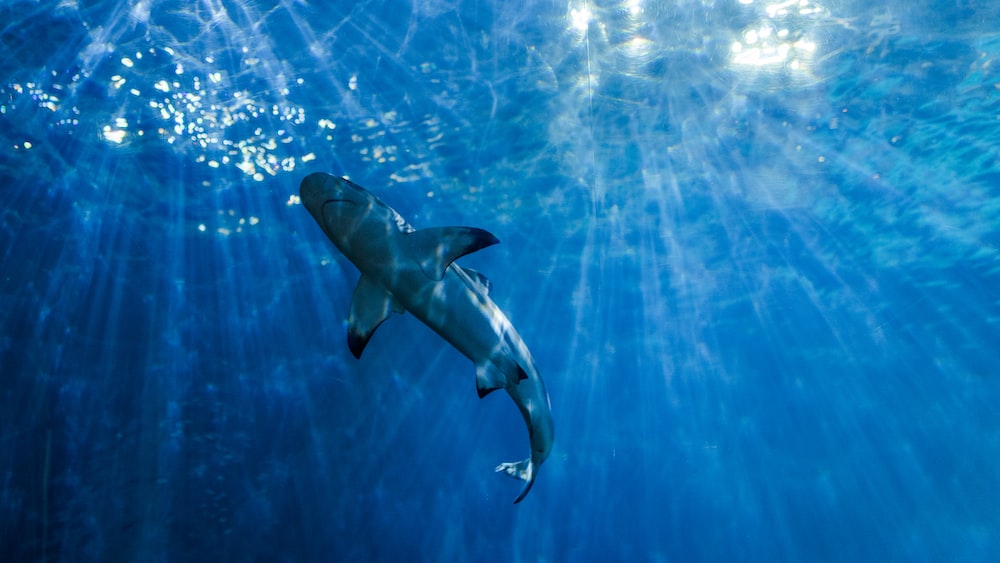
The Connection Between Scientific Names and Conservation Efforts
It’s a bit like having an address for every shark species – without it, conservationists couldn’t send in the cavalry to protect them. These scientific names for sharks clarify which species are endangered and need immediate action. This precision eliminates confusion, especially when local names differ or a species has multiple common names across various regions of the globe.
Binomial nomenclature becomes a vehicle for international treaties and agreements. When conservationists convene, they rally under the banners of species’ scientific names, crafting regulations that serve as lifelines for these marine predators.
Threatened Shark Species and Their Classifications
When it comes to the conservation status of sharks, the IUCN Red List becomes the navigator’s chart. Sharks such as the Scalloped Hammerhead (Sphyrna lewini) and the Great White Shark (Carcharodon carcharias) have found themselves in precarious waters, listed as endangered and vulnerable, respectively.
But what’s in a name, you might wonder? For the Pondicherry Shark (Carcharhinus hemiodon), its scientific name means the difference between getting lost in the tide of anonymity and being a recognized subject of conservation efforts. These classification tags are like beacons, highlighting each species’ plight and stirring the waters of public awareness and action.
The IUCN Red List serves as a crucial guide for understanding the conservation status of sharks, emphasizing the significance of scientific classification in raising public awareness and driving conservation efforts.
FAQs
1. Why are scientific names important for identifying sharks?
Scientific names are crucial for identifying sharks because they provide a universal language for scientists around the world. These unique names cut through the sea of common names and help avoid misidentification, which is vital for research and conservation.
2. How are new shark species named scientifically?
When naming new shark species scientifically, the discovery is followed by a rigorous study, comparing the species’ anatomy and DNA to known species. The process culminates in a published description, bestowing upon the shark a scientific name that notes its distinctive traits.
3. Can a shark have more than one scientific name?
A shark can indeed have more than one scientific name due to reasons such as reclassification based on new genetic or morphological evidence, or simply because it’s been named independently by different researchers unaware of each other’s work.
4. How does understanding scientific names help in shark conservation?
Understanding scientific names plays a key role in shark conservation by enabling precise communication about species among scientists, policymakers, and the public, thus advancing targeted conservation efforts and policies.
Conclusion
As we surface from our dive into the depths of shark classification and conservation, we’re reminded of the intricate and interconnected nature of marine life. The scientific names for sharks are not just terms to be memorized; they carry the weight of survival for these majestic marine creatures. In a way, these names are lifelines, vital for the continuity of species and essential for the health of our oceans.
It’s heartening to know that with every shark species accurately identified and cataloged, we’re taking a small but significant step toward better stewardship of our marine ecosystems. The tales they weave beneath the waves are each a chapter in the greater saga of biodiversity, rekindling our awe for the ocean’s wonders and renewing our commitment to conservation. As we bid farewell to our finned friends, let’s dive into action, ensuring their stories continue long into the future.
For the seas and the creatures beneath the tides, Jasper Flynn.

